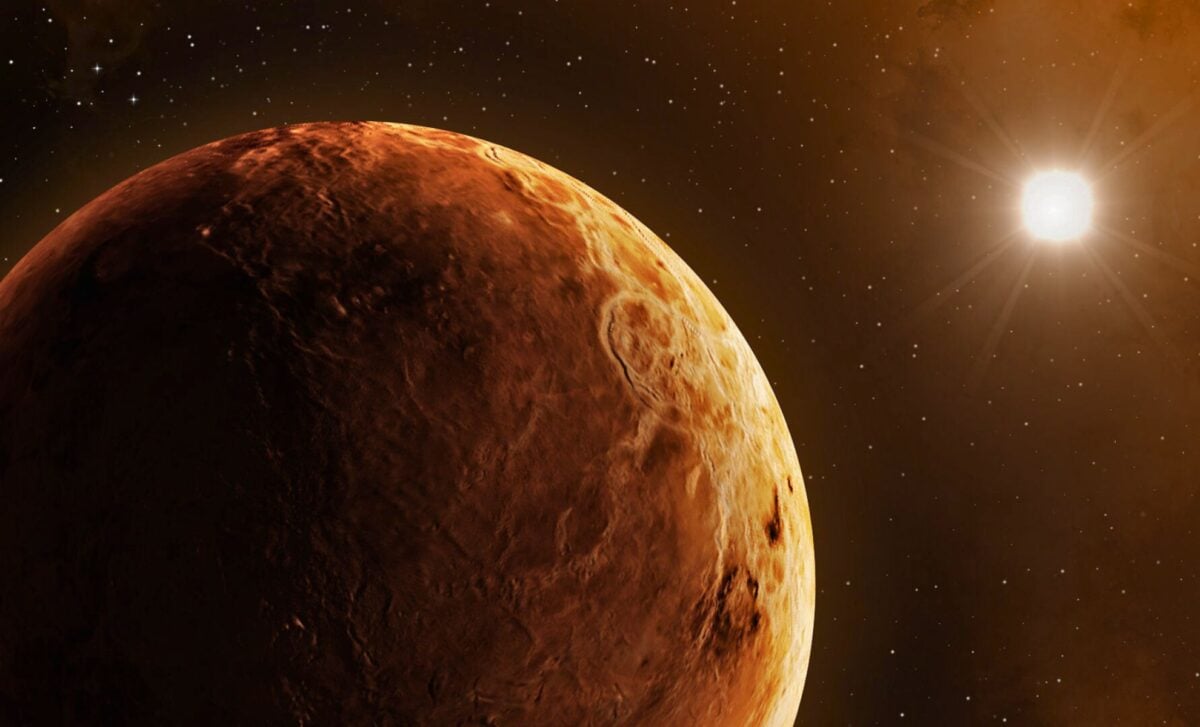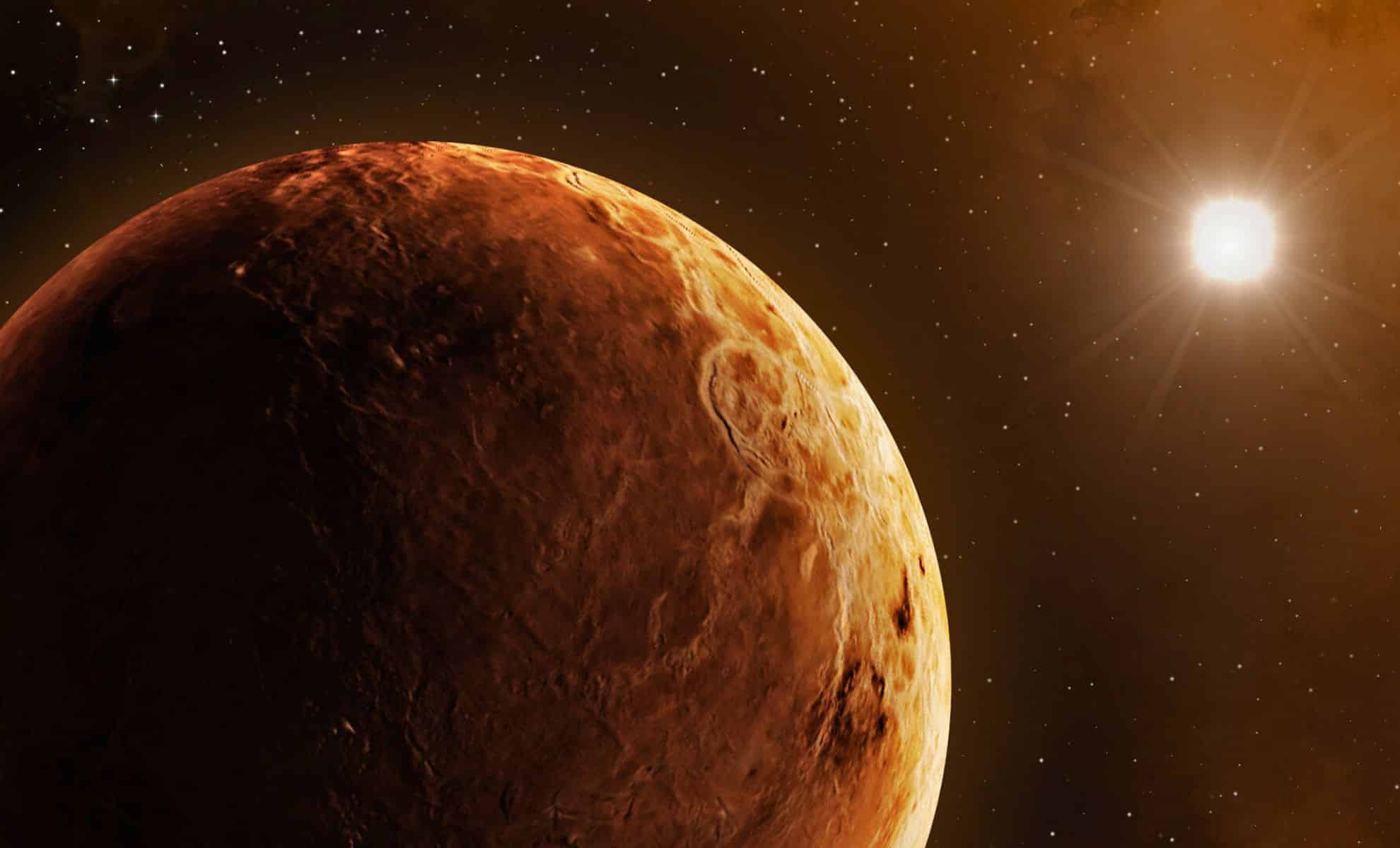NASA’s DAVINCI mission, set for launch in the early 2030s, aims to uncover whether Venus, Earth’s scorching neighbor, once had oceans and continents. Using modern data-analysis techniques on old mission data, DAVINCI will focus on Alpha Regio, a mountainous region believed to be an ancient continent. The mission’s descent probe will capture images from beneath Venus’ thick clouds for the first time in nearly five decades, offering unprecedented insights into the planet’s geological history and evolution.
NASA’s DAVINCI Mission to Unlock the Secrets of Venus: Could the Planet Once Have Had Oceans and Continents?

NASA's DAVINCI mission is poised to answer one of the biggest questions about our planetary neighbor: Did Venus once have oceans and continents, much like Earth?
Scheduled for launch in the early 2030s, this mission is set to explore the possibility that Venus, despite its current harsh conditions, might have once harbored a climate and surface that could have supported liquid water. By delving into the past of this mysterious planet, DAVINCI could redefine our understanding of Venus and why it evolved so differently from Earth.
Unlocking Venus’ Ancient Secrets with New Technologies
The DAVINCI mission (Deep Atmosphere Venus Investigation of Noble Gases, Chemistry, and Imaging) will send a flyby spacecraft and a descent probe to Venus. The mission's primary target is the Alpha Regio, a mountainous region believed to be a possible ancient continent. This area is of particular interest because it could hold the keys to understanding Venus’ geological history and whether it once had water on its surface. The DAVINCI probe will be the first spacecraft in nearly five decades to capture images of Venus’ surface from beneath its thick and opaque clouds.
NASA scientists have applied modern data-analysis techniques to decades-old data from past Venus missions, such as the Magellan mission of the early 1990s. Using advanced tools like artificial intelligence and machine-vision models, the team has enhanced the resolution of Alpha Regio's topography, uncovering new geologic patterns that raise important questions about how these mountains formed. As Jim Garvin, DAVINCI’s principal investigator, explained, this mission is part of a larger effort to piece together “the mosaic that tells the story of Venus.”
Reexamining Old Data for Groundbreaking Discoveries
To prepare for DAVINCI’s arrival at Venus, NASA’s team is reexamining vintage data collected by missions such as Magellan and Pioneer Venus (1978). This data, when analyzed with today’s advanced techniques, has revealed new insights, including recent evidence of volcanic activity on Venus. By comparing this historic information with modern observations, the mission hopes to build a clearer picture of how Venus’ surface and atmosphere have changed over time.
One of DAVINCI’s key innovations is its use of artificial intelligence to sharpen the images captured during the descent, allowing for the creation of detailed 3D topographic maps. These maps will help scientists study Alpha Regio’s surface in unprecedented detail, potentially revealing small features like rocks, rivers, and gullies, which could offer clues about Venus’ past.
Exploring Venus’ Tessera Terrain
Alpha Regio is known for its unique tessera terrain, which consists of rugged, mountain-like formations that resemble geometric patterns on a parquet floor. Tesserae are found only on Venus, and scientists have long debated how these formations came to be. One of the primary goals of the DAVINCI mission is to determine whether the processes that shaped Venus’ tesserae are similar to the geological processes that create mountains and certain types of volcanoes on Earth.
As DAVINCI’s descent probe plunges through Venus’ thick atmosphere, it will begin capturing images once it reaches an altitude of about 25 miles (40 kilometers). Although light scattering in Venus’ atmosphere will blur these images, the mission team is developing methods to overcome this challenge and create sharp visuals. By analyzing the surface texture and rock types, scientists hope to better understand Venus’ geological history and determine whether its continents and tesserae were shaped by processes similar to those on Earth.
Could Venus Have Supported Life?
The overarching question that the DAVINCI mission seeks to answer is whether Venus, often called Earth’s twin, could have once been a habitable planet. With its thick, sulfuric atmosphere and surface temperatures hot enough to melt lead, Venus today is a far cry from a world capable of sustaining life. However, many scientists believe that Venus might have had a temperate climate billions of years ago, complete with oceans and rivers. By exploring regions like Alpha Regio, the DAVINCI mission hopes to uncover evidence that Venus once harbored the conditions necessary for liquid water—a crucial ingredient for life as we know it.
The mission’s findings could reshape our understanding of planetary evolution and help answer the question of why Venus and Earth, two planets of similar size and composition, took such drastically different paths. As Garvin noted, “This is a story of a planet that could have been like Earth but somehow changed dramatically.”
Preparing for Future Missions
NASA’s DAVINCI mission is part of a larger effort to explore Venus, which includes the upcoming VERITAS and EnVision missions. Together, these missions aim to paint a more complete picture of Venus’ past and present. By analyzing the data collected by DAVINCI and its successors, scientists hope to unlock the secrets of Venus’ atmosphere, surface, and potential for past habitability.
As we prepare to learn more about Venus, the DAVINCI mission represents a bold step forward in understanding not just our neighboring planet but also the broader processes that govern planetary evolution throughout the solar system.



